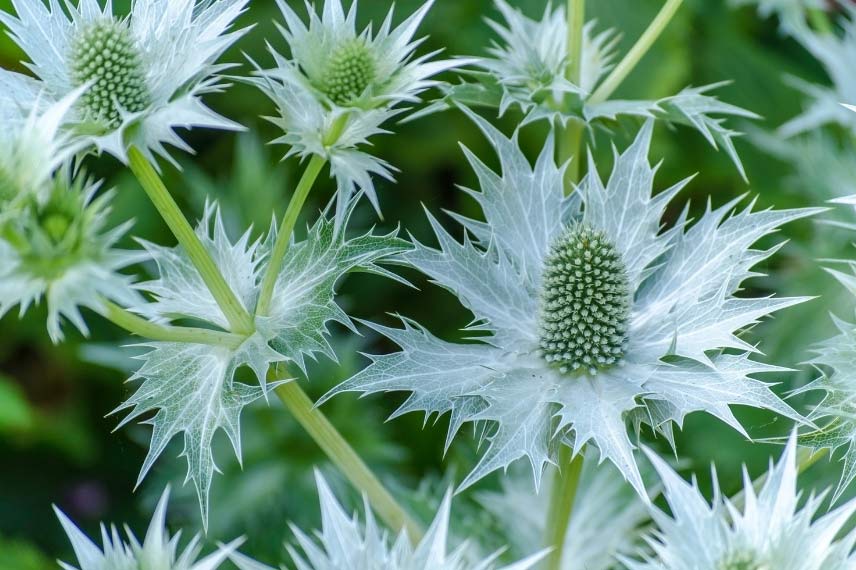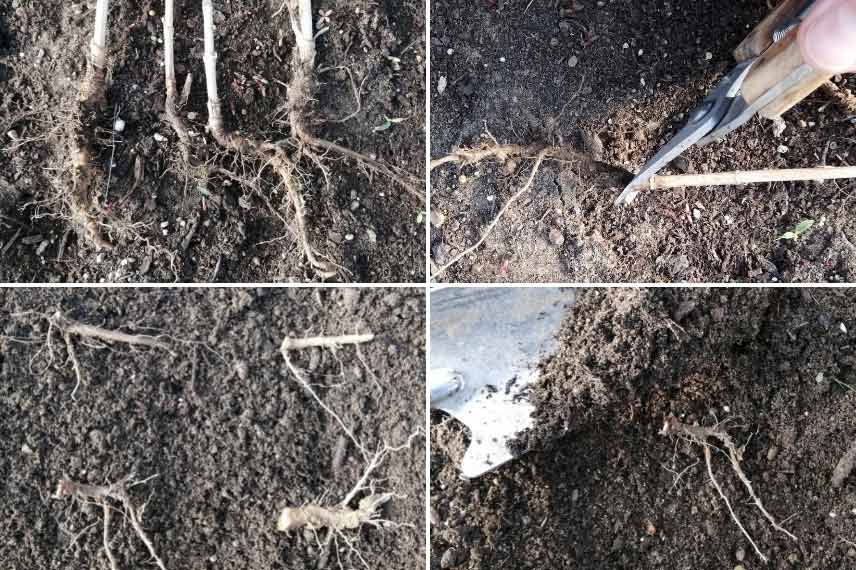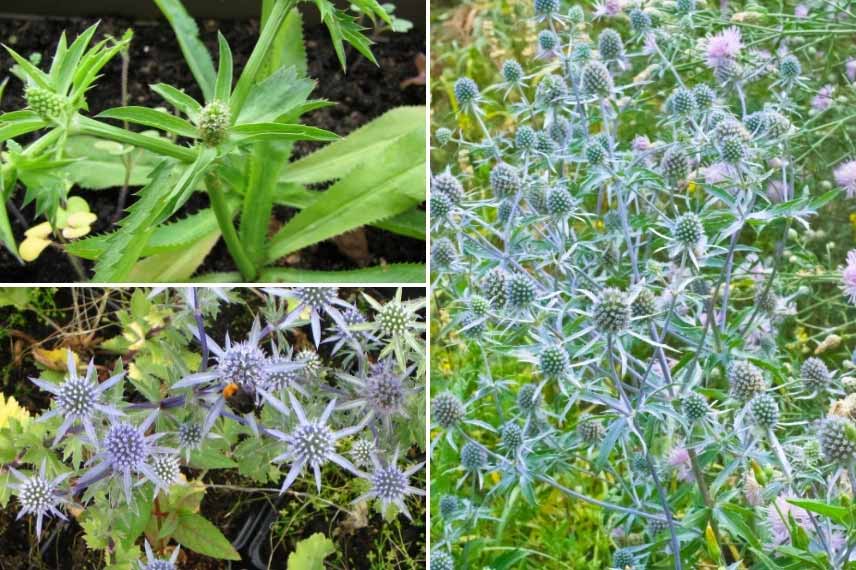Striking and resilient, the Eryngium, commonly known as Sea Holly or Blue Thistle is a perennial that is both interesting and original. Its scientific name comes from the Greek eryggos, meaning "goat's beard", referring to its spiky appearance. It was also once called "thistle bread", as the cooked roots of Eryngium are edible, as are its tender spring leaves.
In the garden, planting Eryngium in borders gives them a bold character, as the striking appearance of the thistles and their stunning blue or silvery-white colours stand out among leafy plants, perennials, or shrubs. From small Eryngium varieties for the front of borders to taller varieties reaching 80 cm or more, you can plant them in any region as they are hardy and undemanding. This makes them ideal for propagation to enjoy their incomparable blue or silvery blooms. Follow all our tips for successfully propagating your Eryngium through cuttings.

Eryngium giganteum
Root cuttings: The most suitable vegetative propagation method for Eryngium
While you can propagate your sea hollies by seed, cuttings offer an easy and reliable alternative to reproduce them identically. For Eryngium, root cuttings work wonders! Every gardener knows that plants can regenerate from their root systems—even small fragments of couch grass or bindweed roots can regrow easily. To propagate your Eryngium using root cuttings, here’s how to proceed.
→ Learn more: What is a root cutting? Techniques, tips, and plant selection
When to take Eryngium cuttings?
The ideal time for taking cuttings is late winter or early spring, when the plant is dormant.
Required materials
- A pot or tray
- A digging fork
- Pruning shears
- Potting compost or a mix of half soil and half sand
Steps for propagating Eryngium from cuttings
- Carefully dig up roots from the Eryngium you wish to propagate using a digging fork. Collect slightly more roots than the number of cuttings you need, as success isn’t guaranteed for every cutting.
- Cut root sections 5 to 10 cm long, removing any dry stems but keeping the small rootlets attached to the main root.
- Fill the pot or tray with compost, leaving a few centimetres to cover the cuttings. The container should be large enough to space out the roots, preventing them from tangling as they grow. Moisten the compost beforehand.
- Lay the root pieces flat on the compost, spacing them apart.
- Cover with a 1 cm layer of compost.
- Place the cuttings in an unheated, frost-free, and well-lit spot. Keep them moist but not waterlogged.

Roots are dug up, cut, laid flat, and covered with compost
What next?
- Wait for shoots to appear. Depending on growing conditions and the Eryngium variety, this may take weeks or months.
- Pot up well-developed Eryngium plants individually, handling them gently. Use a light, well-draining substrate. Continue watering regularly, allowing the soil to dry slightly between waterings.
- The following spring or autumn, you can plant your sea hollies in the garden. They thrive in sunny borders with well-drained soil.

Eryngium plants grown from cuttings
Further reading
- Choose your favourite varieties from our Eryngium collection
Explore our guides on sea hollies:



































Comments